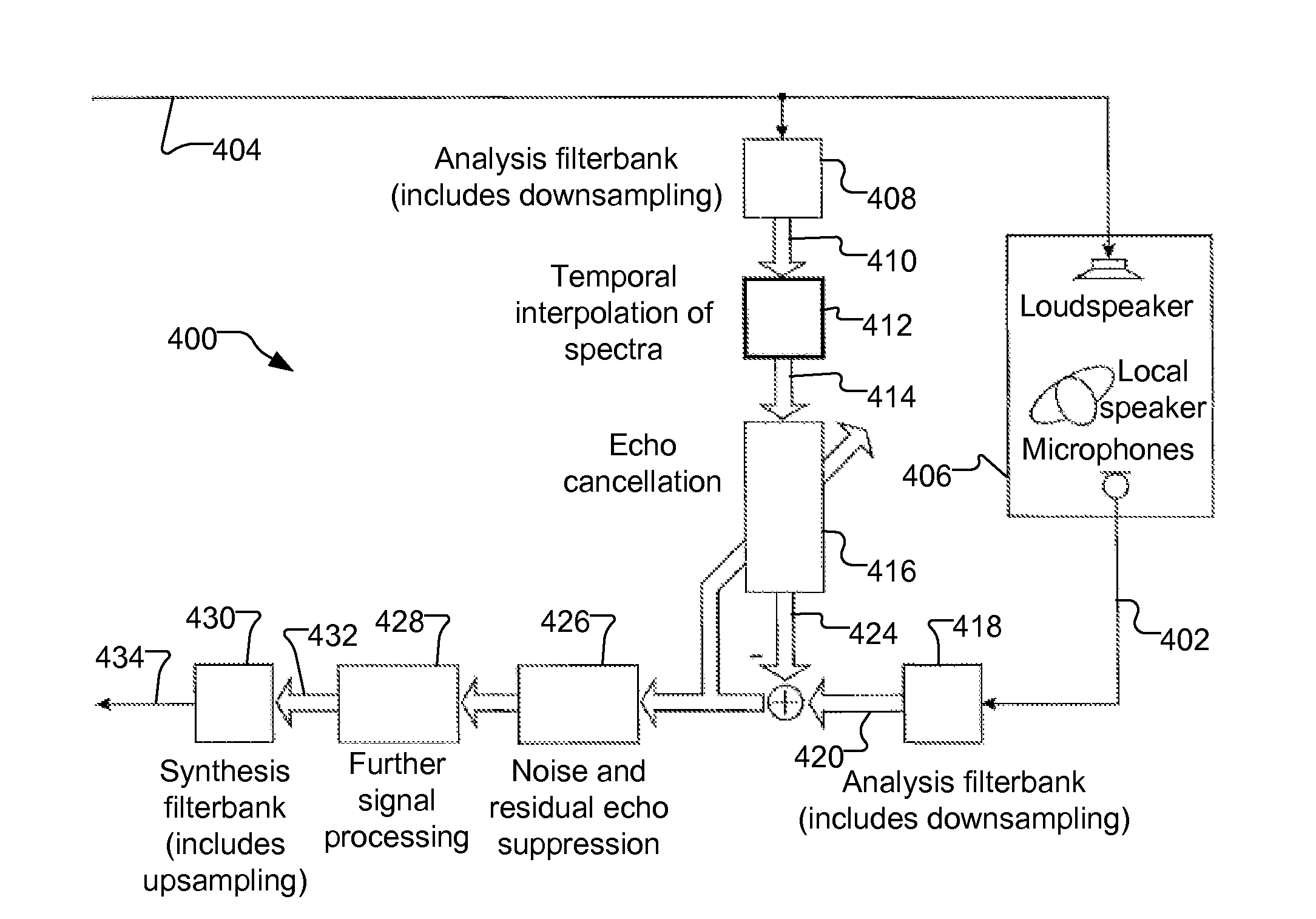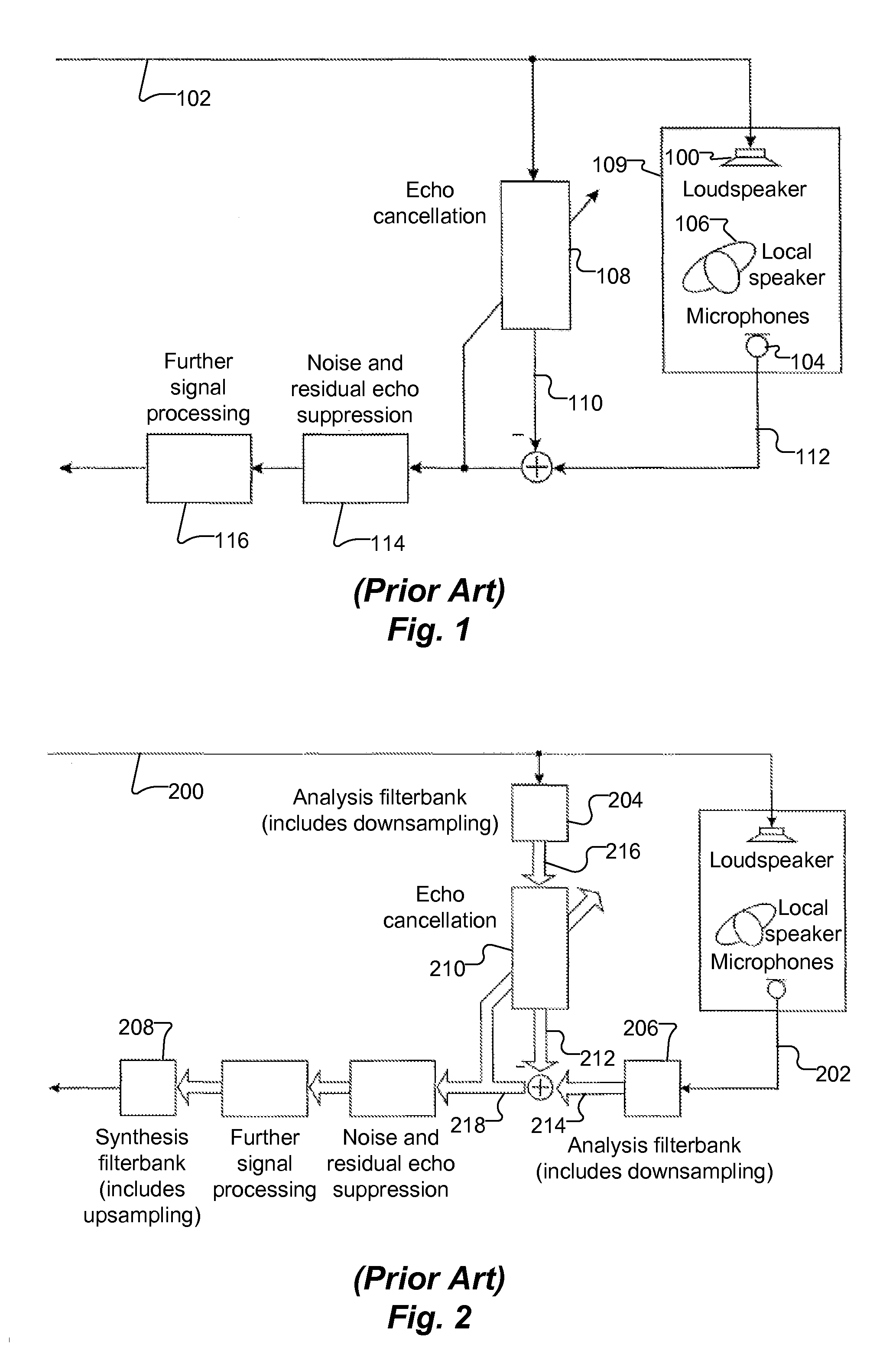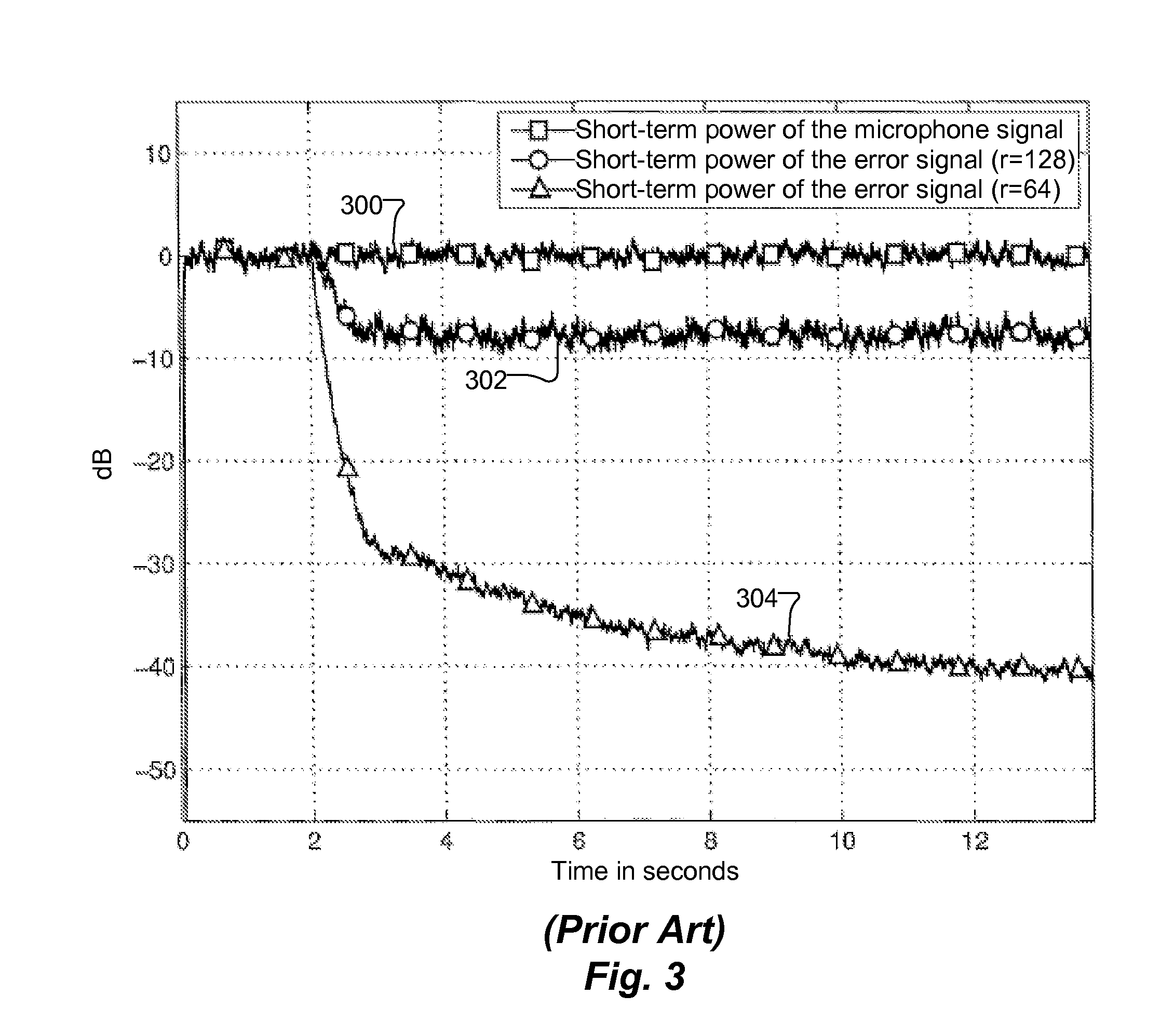Temporal Interpolation Of Adjacent Spectra
a technology of adjacent spectra and interpolation, applied in the field ofsignal processing, can solve the problems of limiting the performance of echo cancellation filters, hindering the adaptation of filters, and high computational load caused by pure time domain processing, so as to increase computational requirements, increase the number of spectra available, and avoid significant delay
- Summary
- Abstract
- Description
- Claims
- Application Information
AI Technical Summary
Benefits of technology
Problems solved by technology
Method used
Image
Examples
Embodiment Construction
[0022]Embodiments of the present invention exploit redundancy of succeeding FFT spectra and use this redundancy for computing interpolated temporal supporting points. Instead of calculating additional short-term spectra, embodiments of the present invention estimate additional short-term spectra between calculated short-term spectra. That is, a short-term spectrum is estimated for each pair of temporally adjacent calculated short-term spectra. The estimated short-term spectra effectively double the number of spectra available for echo cancellation or other signal processing purposes, without significantly increasing computational requirements and without introducing significant delay.
[0023]Due to simple temporal interpolation, there is no need for increased overlapping, no need for lower sub-sampling rates and, therefore, no need for calculating an increased number of short-term spectra. By using these temporally interpolated spectra in the adaptive filtering algorithm, aliasing eff...
PUM
 Login to View More
Login to View More Abstract
Description
Claims
Application Information
 Login to View More
Login to View More - R&D
- Intellectual Property
- Life Sciences
- Materials
- Tech Scout
- Unparalleled Data Quality
- Higher Quality Content
- 60% Fewer Hallucinations
Browse by: Latest US Patents, China's latest patents, Technical Efficacy Thesaurus, Application Domain, Technology Topic, Popular Technical Reports.
© 2025 PatSnap. All rights reserved.Legal|Privacy policy|Modern Slavery Act Transparency Statement|Sitemap|About US| Contact US: help@patsnap.com



